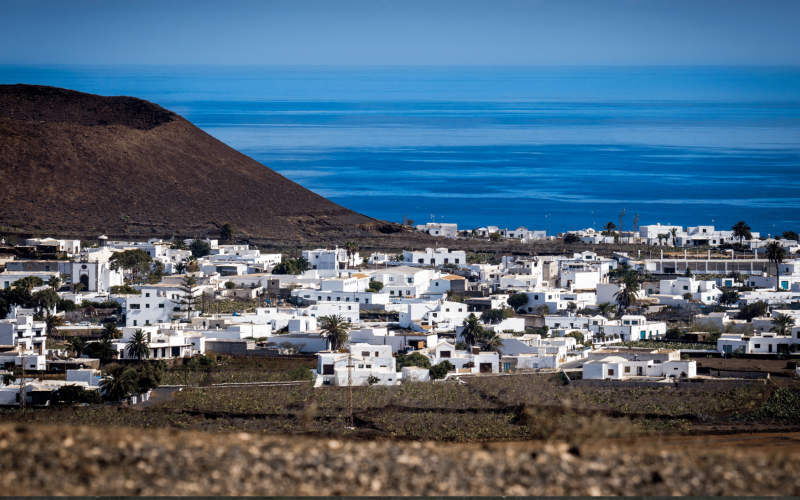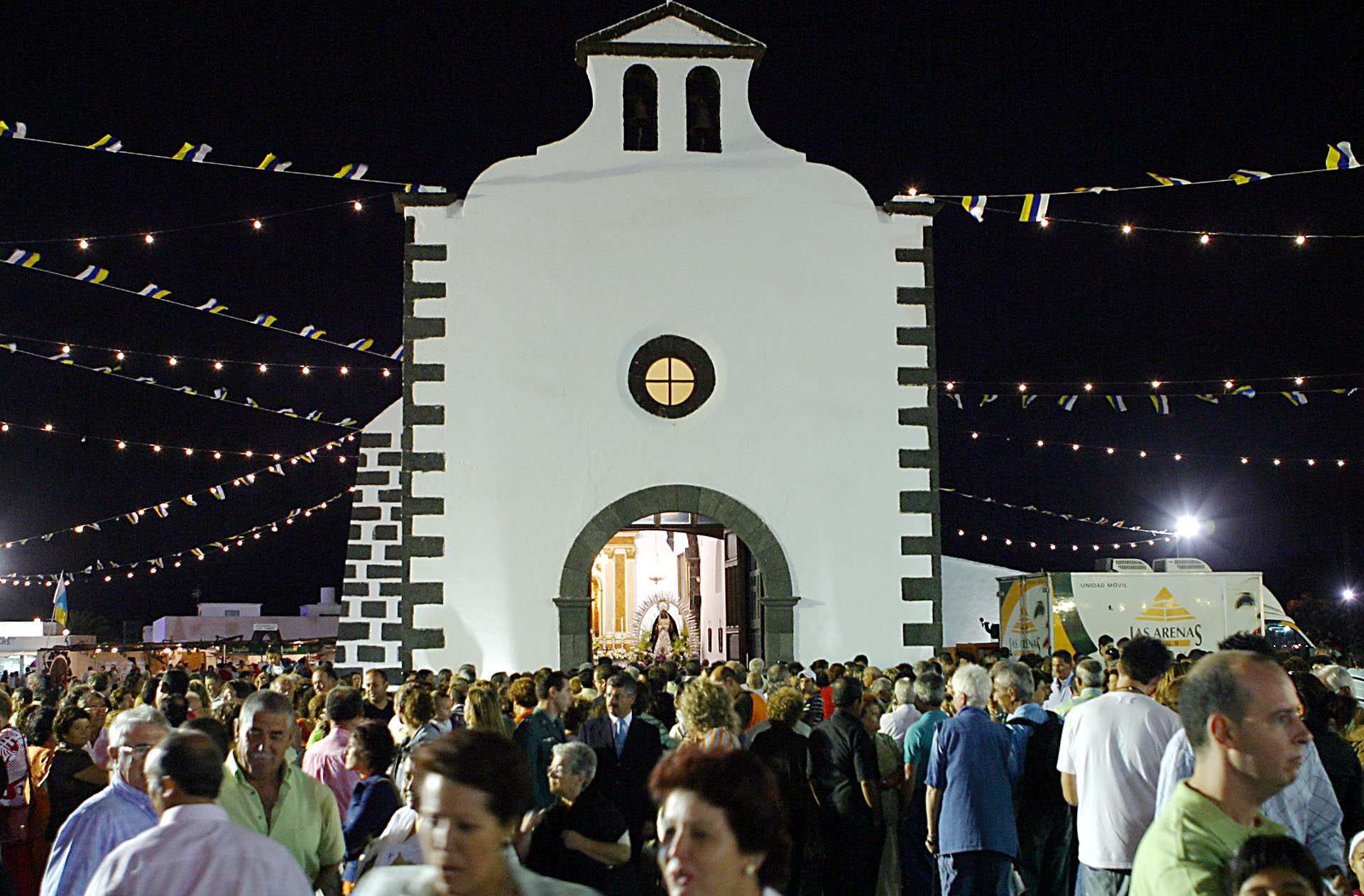Hermitage of Los Dolores
Hermitage of Los Dolores
The origins of the hermitage of Los Dolores and the devotion to its image are strictly linked to the volcanic phenomena that occurred between 1730 and 1736, as it was built by the collective promise to the Virgin of the inhabitants of Tinajo. Little is known about the primitive construction, as the documents referring to the themes of the Virgin were burned in a fire at the beginning of the 20th century in the archives of the main church of Teguise. It is estimated that the construction of the hermitage of Los Dolores began around 1774 when the Virgin appeared to the little shepherdess Juana Rafaela on the slopes of the Guiguan caldera, opening to worship between 1781 and 1785. Originally the building had a single nave as it does today, using "very heavy volcanic slabs" in the construction of its roofs. Later, due to the excess weight supported by the roof, two abutments were built on each side of the building. These works were carried out by Don Antonio Armas. The hermitage of Los Dolores is a religious building whose architecture responds to the guidelines of the island temples. To the right of the nave there are two rooms currently used as a sacristy and which formerly provided shelter for people who made pilgrimages to the sanctuary. Access is via a door with a semicircular arch framed in black volcanic stone (basalt). Above it there is an oculus framed in the same material that illuminates the interior as well as decorating it. In the upper part that tops the front there is a belfry with two openings made with semicircular arches and a triangular pediment that crowns the bell tower. The roof has a gabled masonry cover with a dome that responds to the half-orange model, with a skylight in the central part surrounded by windows composed of trilobed arches. In addition to the characteristics it shares with other temples on the island, it has some of its own, such as the single-storey building and the use of materials from the surroundings (volcanic stone) in the embellishment of the door and the oculus as well as in the side buttresses, etc. The wooden cross marks the place where the volcano stopped. We know that a neighbour in the procession from Tinajo to Guiguan in full eruption and when the gases and heat prevented getting any closer safely, this intrepid gentleman who carried a cross made of tea approached the river of lava and fixed it to the ground. Tradition says that once the cross was nailed in, the lava flow was diverted, covering previous emission flows and then stopped. The cross is made of tea wood, measuring 2.70 metres high and 1.70 metres long. The old cross is nailed on it, measuring 1 metre high by 0.41 metres long. In the centre of it the date 16. IV is documented. 1736. Two festivals are celebrated around the Los Dolores hermitage each year. On September 15th, the most important day is celebrated the day of Our Lady of Los Dolores, and on July 31st, the day that the eruptions of 1824 began, this festival is known as Volcano Day.


